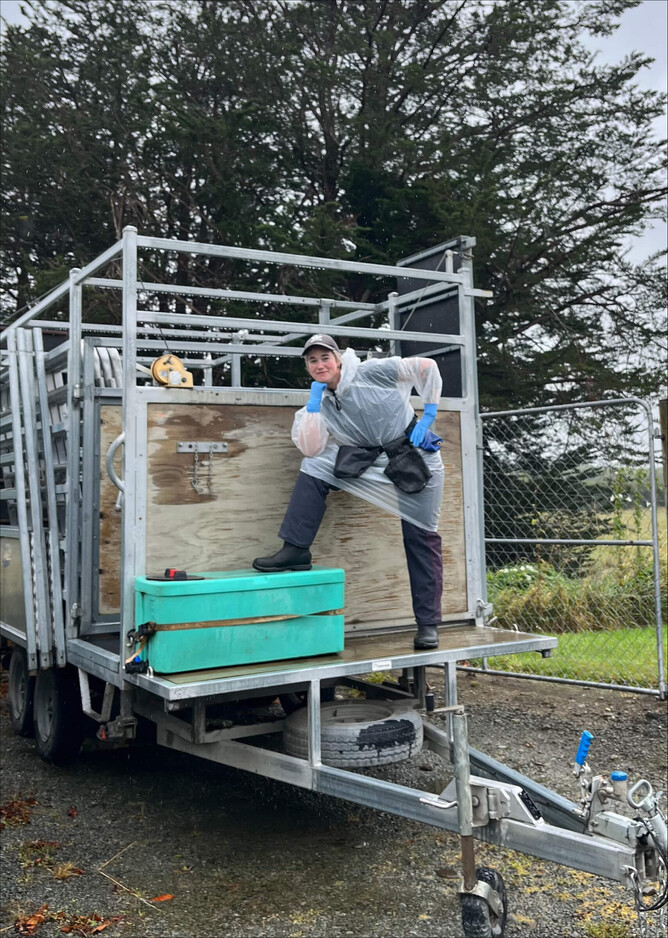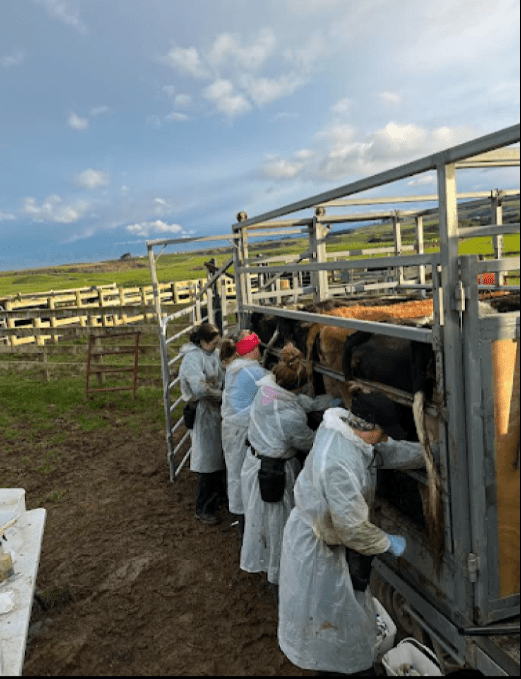Winton vet tech, Jaz Van Dam shares why this is her favourite time in the tech calendar.
Teat sealing preparations begin well before the season starts.
There are so many moving parts to make teat sealing a success and we are so lucky to have such a well-oiled machine.
From vets consulting with clients; retail and inventory staff ensuring the correct stock is ordered and delivered; the operations team triple-checking trucks and trailers for any maintenance that needs completed; HR hiring new staff and ensuring we all have the correct PPE (personal protective equipment) and training; to Farm Services getting clients all booked in, the list goes on...
When April finally rolls around, it’s time to go!
A typical teat sealing day
A typical day really starts the night before, when we will sort and put our product in chilly bins with some hot water bottles to keep it warm overnight. (Ask anyone who's worked with cold product, it’s tough on your hands after a while!)
It also speeds up the process in the morning, when we can just refresh the hot water bottles, before loading up the trucks and trailers with everything we need, doing the safety checks and then hitting the road.
Arriving on the farm, we work together to back the trailer into place and set up the ramps and any gates required. Once we are set up, have done our safety checks and have on our many layers of PPE (including our stunning ponchos), we are ready to go.
We load up the trailer with 6 heifers at a time - it's a squeeze, but that's what we need to safely seal. If there's too much room for them to move, there's a much higher chance of them turning around, kicking us or sitting down on the job. Loading the trailer each time usually involves a bit of encouragement from everyone!
Once the heifers are on, we give our gloved hands a good wash and grab our product from the chilly bin, along with some teat wipes to pre-clean the teats and some cotton balls soaked in methylated spirits to thoroughly clean the teat ends, before inserting the product.
Once they’ve been sealed, we paint them with our individual colours, spray with teat spray and send them on their way. The actual sealing is generally the quickest part.
After all the heifers have been sealed, it's time for us to clean up. We hose, scrub and disinfect the trailers (and anything else we have used for the day) until they are sparkling clean, pack everything up and head back to the clinic. Here, we organise the product for the next day and repeat the process for the next few months!
So, why is it my favourite time of the year?
It's hard work, both mentally and physically, but every day I get to work with a team of amazing people, including the clients that choose us.
We also get to see some incredible parts of Southland, have some great yarns, (hear and tell) terrible jokes, and, even worse, singing!
Finally, at the end of the day, you’ve made a small difference and you’ve made it through together, which makes it very satisfying.



